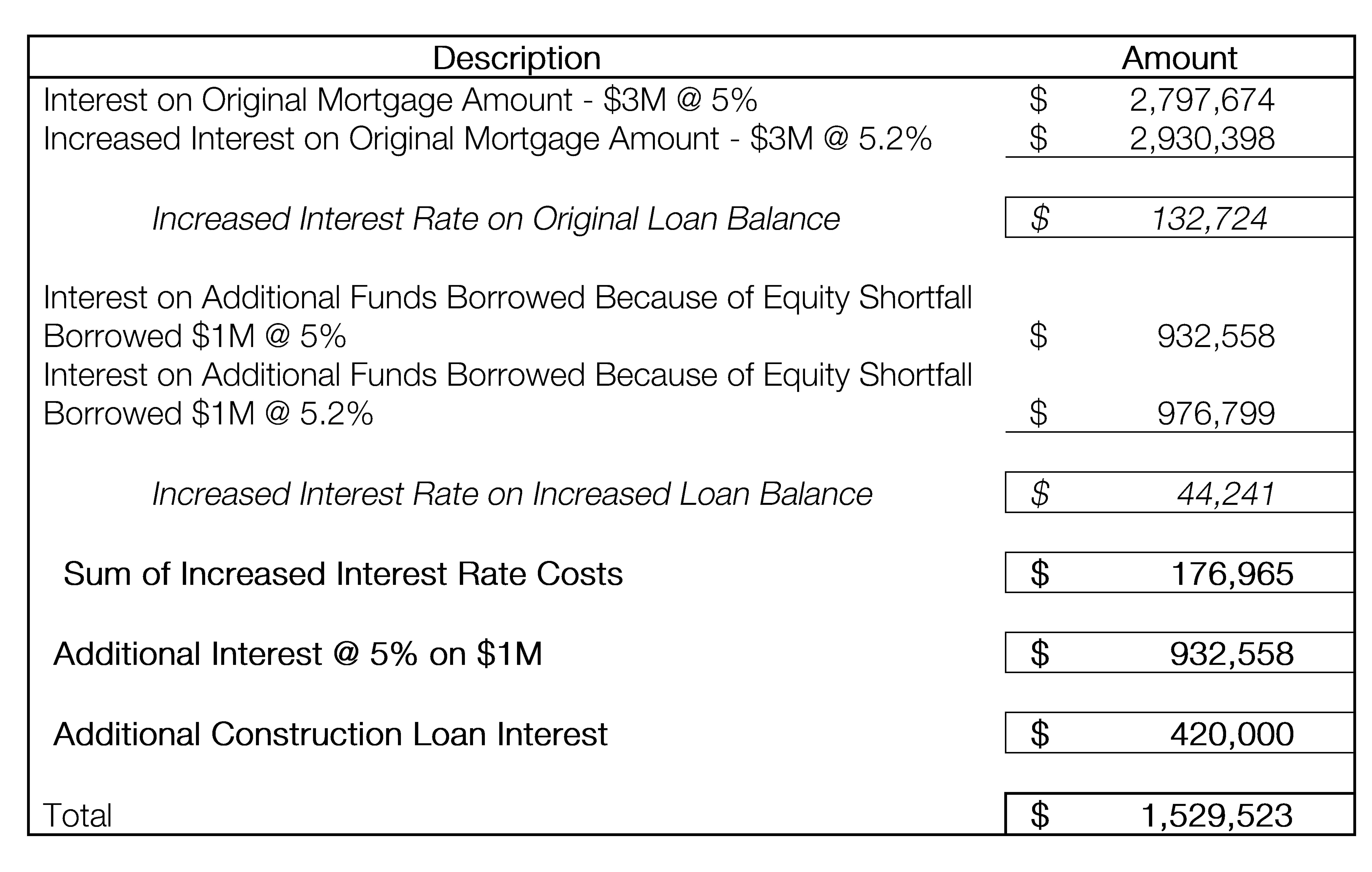Builder’s Risk – Tax Credit Financing
 Federal tax credits are a crucial component for the development and preservation of affordable rental housing. Federal tax credit financing available to the construction industry was devised by Congress and state agencies as a way to encourage private investment in projects and businesses that provide a public benefit to underserved communities.
Federal tax credits are a crucial component for the development and preservation of affordable rental housing. Federal tax credit financing available to the construction industry was devised by Congress and state agencies as a way to encourage private investment in projects and businesses that provide a public benefit to underserved communities.
The tax credits that accrue for developing affordable housing in the United States are allocated annually by state and local housing agencies to project developers, and involve a highly selective application process and are referred to as Low-Income Housing Tax Credits, or LIHTCs.
Owners and developers sell the rights to tax credits to equity investors in exchange for equity investment in affordable housing projects. This serves to reduce the debt and equity investment that owners/developers would otherwise have to invest in order to fund construction of affordable housing units. The lower overall project financing costs form a basis for lower rents once the property is operational.
What types of tax credits are available?
Projects can qualify for LIHTCs related to new construction or rehabilitation projects. LIHTCs are typically used in conjunction with other financing mechanisms including construction loans, bond financing, conventional mortgages, alternative financing, and grants from the public or private sources. Some states also provide financing in the form of state tax credits.
Historic tax credits are also available for the rehabilitation and reuse of historic depreciable buildings. HTCs are provided in the form of 20% of the actual expenditures incurred to improve the buildings.
What types of LIHTCs are available for construction of affordable housing?
The federal LIHTC program involves two types of LIHTCs, a nine percent tax credit and a four percent tax credit. Either credit is available for new or rehabilitation construction. The LIHTC is equal to approximately nine percent of the amount of a building's qualified basis annually for 10 years and is designed so that the present value of the credit is no more than 70% of the building's qualified basis. A four percent annual credit is available if the building is constructed or rehabilitated with federal subsidies or an existing building is acquired and substantially rehabilitated, in which case the present value of the credit is designed to be no more than 30% of the building's qualified basis.
Multiple parties are involved in structuring a LIHTC deal, including the following:
-
IRS/HUD
-
State governments (state housing agencies) who participate in the allocation of the available tax credits afforded to the applicable state
-
Owner/developers
-
Equity investors
-
Residents
How do tax credits accrue in the context of construction? How are they used to finance construction?
Developers typically sell the rights to the LIHTCs to equity investors to raise capital, which in turn, is used to fund construction or pay down the debt of the construction. Equity investors provide funding at different construction milestones throughout the project, with the promise of receiving annual tax credits for a period of time after completion of the project, usually 10 years (if the nine percent credit is elected).
Normally, the developers/owners form a limited liability company (LLC) for the project. The developer (LLC) will then enter into a limited partnership agreement with the equity investor. As part of the partnership, the developer becomes the general partner and maintains the construction and operating authority of the project. The investor agrees to be the limited partner but maintains a majority of the ownership percentage of the project.
The limited partnership agreement forms the basis for ownership, obligations with respect to cash-flow rights and the amount of the capital contributions expected from each party. The agreement specifically dictates the amount of capital contribution from each funding source/partner, with the capital contributions tied to construction milestones.
In order for the completed project to maintain its tax credit eligible status, a specific percentage of the residential rental units must be placed into the tax credit program, whereby a portion of the units are rented to individuals whose income is not more than 50% or 60% of the Area Median Gross Income (AMGI) depending on the tax program.
Once a new project is proposed and deemed to be eligible to be awarded the tax credits, other construction and resident-related criteria still stand as standards that must be met in order for the tax credits to be awarded during the 10-year operating period that follows construction.
How are LIHTCs impacted following a loss event?
LIHTCs are market driven, not unlike commodity pricing. A delay in the completion of the project may result in a change in the value of the credits available and in the postponement when the equity investors can ultimately use the tax credit.
How is the project financing impacted when LIHTCs are part of the capital structure and a delay occurs?
Understanding the financing of a LIHTC project is critical in determining the depth of the exposure of each of the insured parties. Typically, a LIHTC project is financed with a combination of construction loan proceeds (bond financing), mortgage, and equity investment. Not unlike all construction projects, when a project that is financed using LIHTCs suffers physical damage that results in a delay to the completion of the project, the overall financing cost of the project may increase. However, the impact on the overall project financing may be magnified by the loss of capital contributions.
Consider the construction of affordable housing units. Total construction and development costs are $14 million with a combination of debt, state grants, and federal tax credits in the form of LIHTC equity investment ($11 million). The tax credits that will be awarded are valued and transferred to the equity investors who in turn contribute capital to the project. The capital from the equity investors is used to pay down the debt of the project.
The LIHTC eligible project began construction on January 1, 2017, with a scheduled completion date on December 31, 2017. On November 1, 2017, the project suffered a catastrophic fire loss destroying nearly the entire structure. Costs to bring the project back to the pre-loss construction condition are estimated at $12 million. For purposes of this example, reconstruction costs are fully funded by proceeds from the insureds’ builder’s risk policy.
The fire results in a 12-month delay in the completion of the project, with a revised completion date of December 31, 2018. The impact on the financing of the project results in the insured carrying the construction loan an additional 12 months. Additionally, a provision in the limited partnership agreement between the developer and equity investor states that delays in the project result in a $1 million reduction in the capital contribution from the equity investors resulting in a funding gap of $1 million.
The limited partnership agreement dictates that the funding gap is to be filled by the developer in the form of its own capital contribution or through the developer’s use of other financing mechanisms, including an increase to the debt service that was part of the overall operations of the rental property when completed. The general partner and the limited partner are distinct and share no common ownership.
During the 12-month delay, interest rates increase by 20 basis points (from 5% to 5.2%), further compounding the insured’s losses. Project financing costs as planned and modified following the loss are outlined in Table 1 below:

A few takeaways from this table:
-
Longer Carry Period for Construction Loan – A cursory review of the delay period interest cost differential demonstrates that the additional interest during the delay period – 2018 is $271,005; however, the sequence of planned construction loan interest payments are all pushed out 12 months as a result of the delay. Given this, the additional carry period on the construction loan is 12 months longer than planned, resulting in $420,000 in construction loan interest that was not part of the planned project.
-
Additional Costs Beyond the Delay Period – The impact of additional financing costs extend beyond the delay period.
-
Lost Tax Credit Equity – The reduction in capital from the equity investor has the most impactful and long-lasting effects on the overall financing of the project.
Table 2 further details the magnitude of the additional interest costs:

In the event that the equity investor is a named insured, a salient point arises that a loss to one insured party may be a gain to another insured party resulting in no net loss. However, this approach ignores that the parties are unrelated and unlikely to reach an agreement to compensate one another outside of the terms of the limited partnership agreement that was established at the outset of the project.
A close examination of financing costs following the loss event reveals that the majority of the insured’s additional financing costs are outside of the delay period. The loss of $1 million in capital from the equity investor is also most impactful. While an argument can be made that the developer could use its own funds to fill the monetary shortfall, there is a significant cost associated with the developer’s capital outlay that otherwise might be deployed and invested elsewhere. The loss also occurred during a period of rising interest rates subjecting the insured to further losses throughout the duration of the mortgage.
The illustration above highlights the challenges of overlaying the terms of an insuring agreement over a complex construction project with several interested parties and investors. The insuring agreement may defray some of the costs, but instances exist following a loss that is not contemplated when the agreement is signed.
Consideration of the different perspectives and goals of the project stakeholders during the underwriting process may allow for this type of discordant risk to be minimized. At a minimum, it’s instructive to consider various scenarios as doing so will provide some level of clarity as to the interested parties exposure and related risk. A dialogue by insurers, insureds, and other interested parties is important to establish where the most significant exposure exists, with insureds taking other measures to mitigate potential uninsured losses.
Patrick Kelleher, CPA, CFF, has nearly two decades of experience working in the area of forensic and investigative accounting field. He has extensive experience in the commercial insurance claims area, evaluating claims of financial damages, including business income, property and fidelity matters ranging from $50,000 to $150 million in damages.








